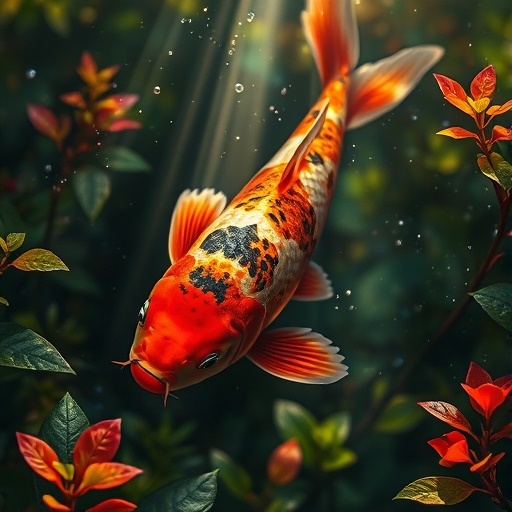Koi fish, with their vibrant colors and graceful movements, are not only one of the most adored ornamental fish species but also a significant part of the cultural heritage in many East Asian countries. Originally from East Asia, especially Japan, koi fish have gained immense popularity around the world. Their population has seen remarkable growth in the last few decades, driven by a combination of factors including selective breeding, cultural importance, and the increasing interest in ornamental fishkeeping. The global rise in koi populations reflects a growing trend in private aquaculture, hobbyist enthusiasts, and ornamental pond designs.
Historical Significance and Cultural Impact
Koi fish, scientifically named Cyprinus carpio, were initially bred in Japan for food purposes, but over time, their beauty and striking appearance caught the attention of Japanese farmers and breeders. By the 19th century, koi were being selectively bred for their colorful markings and graceful swimming abilities. These fish were soon embraced as symbols of wealth, prosperity, and strength, especially in Japanese culture. The koi’s ability to swim upstream, symbolizing perseverance and determination, further embedded its cultural significance.
As koi began to be seen as symbols of good fortune, many families began to keep them in ornamental ponds as a representation of prosperity. The koi fish population in Japan remained relatively steady for many years, but the global demand for koi surged in the late 20th century as more people worldwide learned about their cultural and aesthetic value.
The Surge in Global Koi Populations
Over the years, koi fish have become a popular feature in gardens and water ponds, not just in Japan, but across the globe. As ornamental fishkeeping has gained popularity, koi have become a staple of water gardens, public fountains, and private ponds. Koi are now found in many countries, including the United States, the United Kingdom, and various European nations. The number of koi fish in these regions has grown significantly, thanks to a combination of factors such as international trade, increased breeding capabilities, and growing interest in outdoor water features.
Koi farming has evolved into a large-scale industry with farms and breeders producing millions of koi annually. Breeders have perfected the art of selective breeding, producing a wide variety of colors, patterns, and sizes. Koi are now seen as valuable collectibles, with some specimens fetching high prices at auctions. These high-value koi, often referred to as “show koi,” are prized for their exceptional beauty and flawless markings. As koi breeding and sales have become more sophisticated, the global population of koi fish has grown exponentially.
Koi in Captivity vs. the Wild
While koi fish are abundant in captivity, it is important to recognize that their presence in the wild is far more limited. Koi are originally descendants of wild carp species, but their domesticated counterparts are almost always bred in controlled environments. In their native regions, koi may occasionally be found in the wild, particularly in rivers, lakes, and ponds where they are released or have escaped captivity. However, the vast majority of koi fish today are bred and raised in artificial ponds, aquariums, and water gardens.
Koi populations in the wild remain relatively small, and in some areas, koi are even considered an invasive species when they are introduced to natural water bodies. When koi escape or are released into local ecosystems, they can outcompete native fish species for resources. This has raised concerns about the potential ecological impact of koi in non-native habitats, particularly in regions where koi are not part of the natural environment.
Sustainability and Responsible Practices
As the global koi population continues to grow, it is crucial to maintain responsible breeding and care practices to ensure the long-term sustainability of these ornamental fish. Koi require specific conditions to thrive, including clean water, appropriate temperature, and a balanced diet. When kept in outdoor ponds, koi need ample space to swim and grow to their full potential.
One important consideration is that koi are large fish, often growing up to three feet in length. Ponds and water gardens need to be adequately sized to support their growth and health. Additionally, breeders and koi owners must be aware of the potential environmental consequences of releasing koi into the wild, as this can harm local ecosystems.
Conclusion
The population of koi fish has seen impressive growth worldwide, as they have become more than just ornamental fish—they have become symbols of culture, status, and beauty. While the koi population in the wild remains limited, their numbers in controlled environments continue to rise. This growth is fueled by advances in breeding, the global fascination with koi, and their importance in outdoor decorative designs. As koi continue to thrive in aquaculture, it is essential that responsible breeding and care practices are followed to ensure their sustainability while minimizing their ecological impact. The koi fish’s future looks bright, with its population likely to keep growing as it continues to captivate people around the world.

